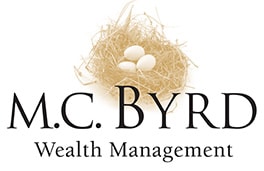In nearly every purchase of a capital asset there exists a metric to judge what value has been received at the time of purchase.
In the commercial real estate market, the capitalization rate compares the net operating income (rental income less expenses) to the property asset value.
In purchasing privately held companies, the EBITDA multiple measures the purchase price with relation to the net income of a business prior to taking out interest, taxes, depreciation and amortization. Typically, capital intensive businesses demand higher multiples than service businesses with low barriers to entry.
Even the bull pen of baseball thrives upon statistics. All but three of the top ten salaries in baseball are earned by the best-performing pitchers.
Each of these examples have one common denominator: cash flow.
Higher cap rates in real estate mean more cash flow. Privately held companies with superior net income demand a higher purchase price. Fantastic pitching creates winning teams and increases ticket sales.
At the end of the day, cash flow determines value.
Of course, past cash flows are helpful in estimating value, but future cash flows are most important to those purchasing assets. If the estimate of future cash flow is wrong, an investment can turn into a poor decision. The Empire State Building is a prime example of a real estate project whose cash flow projection turned out to be terribly wrong. Completed in 1931 during the depths of the Depression, the building was only 25 percent occupied. The building did not become profitable until after World War II.
One of the worst cash flow decisions in baseball involved the 1984 Atlanta Braves contract with Bruce Sutter. Bruce stopped pitching for the Braves in 1986 but is still getting paid due to the terms of his contract. In fact, his total compensation will be over $45 million dollars paid through 2022. Not bad if you are Bruce. Not great for the Braves’ cash flow.
In the stock market, just as any other market, the value of an asset is determined by cash flow. If the real cash flow of a company is significantly less than projected cash flow the price investors have paid for a stock may turn out to be too high.
According to FACTSET, at the stock market peak in February the 12-month forward earnings estimate for the S&P 500 was close to 180 dollars per share. Current forward earnings estimates are approximately 140 dollars per share, meaning these projections have endured a 23% decline.
Given that prices have not declined by the same amount, we can reasonably ascertain that the market is more expensive than it was in February. According to FACTSET, the price of the market with relation to analyst estimates has not been this high since January of 2002, a month in which Barron’s magazine ran stories somewhat reminiscent of today’s headlines:
Different This Time
Economist Gary Shilling thinks the stock market’s hopes for a quick economic recovery will be disappointed. Why the Fed doesn’t matter as much as everybody thinks. A U or W instead of a V.
In ’02, investors rushed into stocks thinking the recession would be short and swift. By July of that year the S&P was down roughly 32 percent. S&P 500 earnings would not reach its annual pre 9/11 peak until 2004. Buy and hold investors did not regain their balance for many years.

When it comes to purchasing assets, it pays to be picky about the price.

